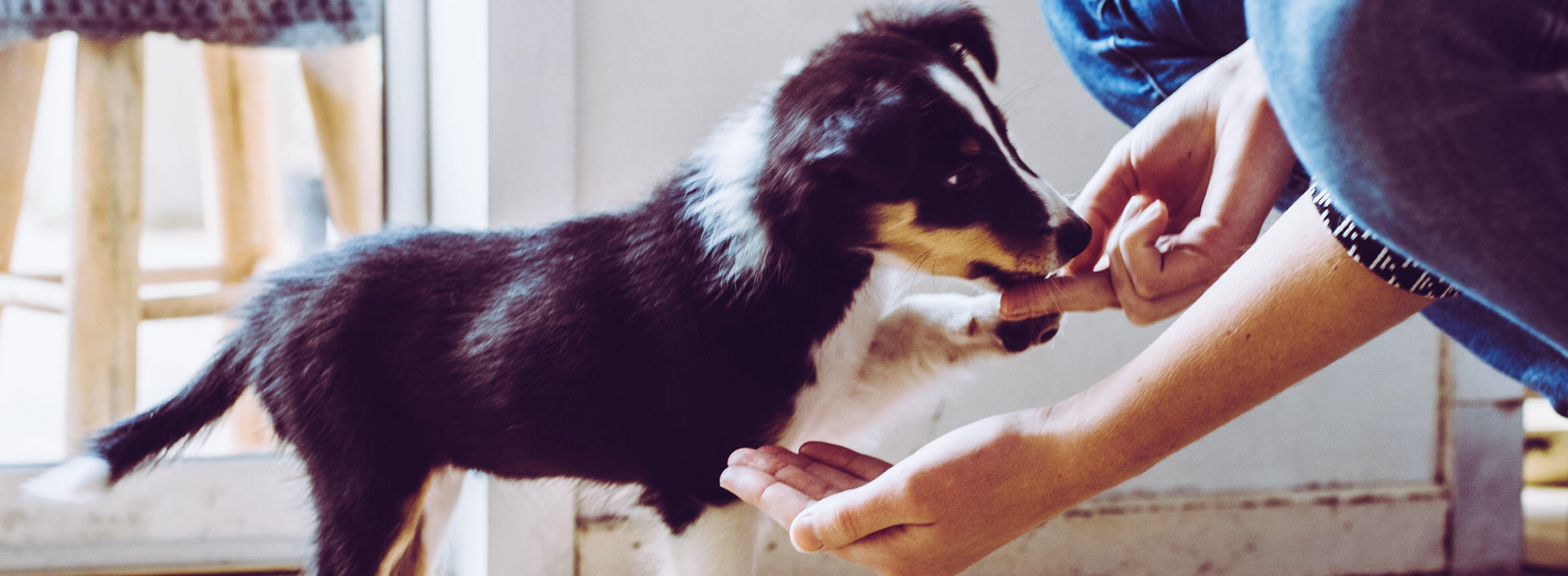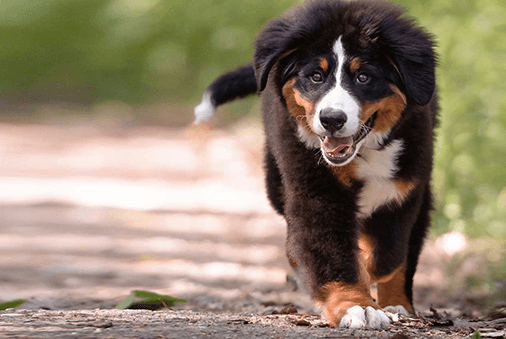Puppies are understandably excited when treats enter the picture, but their excitement doesn’t have to translate into you losing a finger. When taking treats, some pooches are gentle of their own accord — but this isn’t innate behaviour for dogs.
Treats can be an integral part of dog training — and learning to take a treat gently is a foundational skill. It will protect you and anyone else who offers your dog a treat in the future, including strangers.
The following “gentle” method will stop your puppy from nipping at your hand to access treats. At the heart of this training is making dogs feel in control: If they behave a certain way (if they’re nice), they’ll get a treat (which is very nice).
Step 1: The Right Conditions
Your first goal is to create a sense of calm as this minimizes unrelated reactionary behaviour from your buddy. Choose a spot that’s free of distractions, aim for a quiet time of day in your household, and only attempt this training when your puppy is relaxed.
Step 2: The Initial Offer
Place a treat on your palm and close your hand into a fist. Direct your buddy to sit, which encourages calmness. Offer the treat. If your puppy bites your hand, maintain the fist, with the treat tucked tightly inside. Avoid jerking your hand away, as this could trigger predatory instincts like lunging and increasingly aggressive biting. This could also cause you to drop the treat, allowing your pup to nab it (and rewarding the bad behaviour). Once the bites subside to licks or loving nibbles, praise your pal, open your hand, and allow your puppy to take the treat.
Step 3: Gentle Does It
Once your dog begins taking treats without biting, it’s time to add a cue word. Offer a treat inside your fist once again. When your pup reacts with licks or nibbles, say “gentle” right before you open your hand to release the treat. This establishes an association between the learned behaviour and the cue word. Your pup will come to understand that being gentle is the only way to get treats — and that obeying the “gentle” command will be rewarded in general.
Step 4: Treats in Sight
In this phase, hold a treat between your thumb and another finger. Offer the treat to your buddy and say “gentle.” If your puppy takes the treat gently, give praise. If your puppy lunges or is rough in any way, tuck the treat inside your fist and retract your hand. Repeat Step 3 until the target behaviour is mastered.
Step 5: Real-World Scenarios
Continue working on Step 4, but gradually incorporate distractions. For example, you could switch to a louder environment, bring another person into the room, or offer more-favored treats. Increasing the variables helps to acclimate your pup so that, in time, your good boy or girl will take treats gently regardless of the circumstances.
Bonus Tips
- Start with a treat that isn’t your puppy’s to-die-for favorite, but slowly build up to it. For example, if your pal loves jerky, offer a biscuit in the early stages. As your pup progresses, swap in treats of increasing value — and ultimately jerky. This reduces the chances of excited biting (and pain for you) and also motivates your buddy as the training becomes more challenging.
- For example, begin with a biscuit, and as your pal progresses, swap in treats of increasing value until you get to jerky. This reduces the chances of excited biting (and pain for you).
- “Gentle” is a popular cue word, but you can choose any word — as long as friends and family stick with the same one.
- Gloves are a good idea if you have a nippy pup. Thin leather gloves provide the best balance of feel (you may not detect light biting if gloves are too thick) and protection.
- Don’t schedule a training session too long after a meal or your pup could be hyped-up from hunger.
- Five minutes is a good session length, but don’t offer more than 10 treats during that time. Space sessions at least one hour apart.
Teaching puppies manners when taking treats requires time and patience, not to mention willpower (those puppy-dog eyes...) — but put in the effort and you’ll be rewarded, too.




